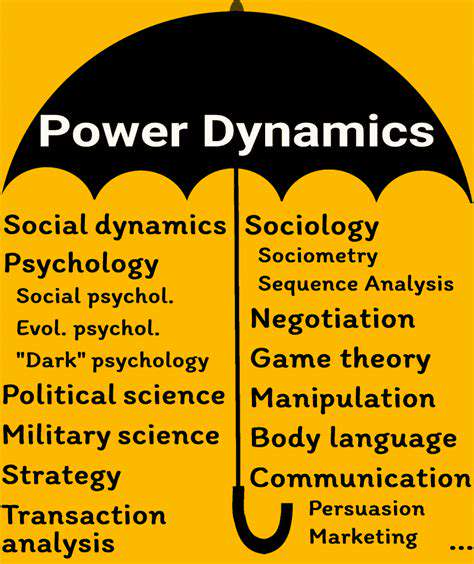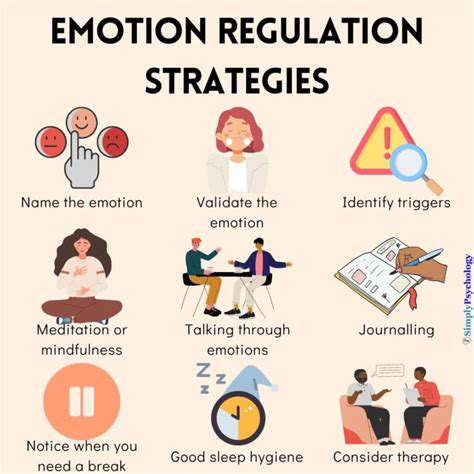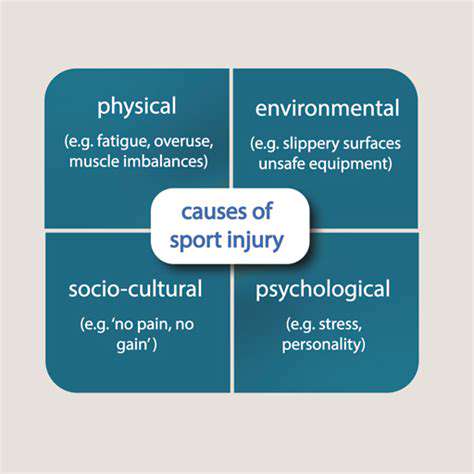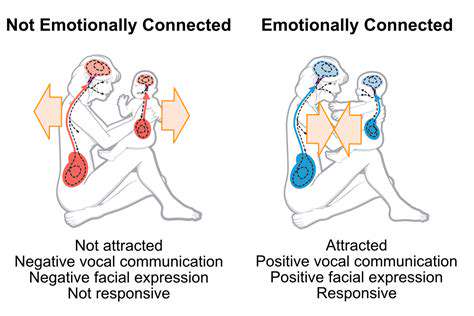How to Identify Toxic Patterns Before They Destroy Your Marriage
Identifying the Subtle Signs
Many toxic behaviors fly under the radar at first glance. What begins as occasional sarcastic remarks or helpful criticisms can gradually morph into systematic emotional erosion. The real danger lies in how these micro-aggressions accumulate over months or years, like water slowly wearing down stone. Common red flags include backhanded compliments, excessive teasing framed as jokes, and creating artificial scarcity in relationships.
Developing awareness requires tuning into your gut reactions. That persistent knot in your stomach or unexplained exhaustion after interactions often signals something deeper at play. Keep a journal documenting specific incidents and your emotional responses - patterns emerge more clearly when viewed objectively over time.
The Cycle of Control and Manipulation
Manipulators operate like psychological illusionists, using misdirection and emotional sleight-of-hand. They might forget important promises while remembering every minor transgression against them. The most dangerous controllers often appear charming in public while showing their true colors in private. Watch for inconsistencies between their words and actions - these gaps reveal their true priorities.
Psychological manipulation frequently follows a predictable rhythm: tension building, incident, reconciliation, and calm before restarting the cycle. Breaking this rhythm requires recognizing when you're being trained to anticipate and accommodate bad behavior. Documenting incidents can help maintain perspective when gaslighting attempts make you question your memory.
Emotional Abuse and Neglect
Unlike physical wounds, emotional damage often remains invisible to outsiders. The victim may appear functional while internally carrying crushing self-doubt planted by their abuser. Particularly insidious is intermittent reinforcement - alternating between affection and cruelty creates powerful psychological bonds similar to gambling addiction.
Recovery requires rebuilding your internal compass. Start by identifying three trustworthy people who consistently demonstrate healthy behaviors, using them as emotional reference points. When in doubt about whether a behavior crosses lines, ask how these healthy individuals would likely respond in similar situations.
The Impact of Isolation and Gaslighting
Isolation tactics often begin subtly - discouraging certain friendships, criticizing family members, or monopolizing free time. The manipulator systematically dismantles your support network like a chess player removing protective pieces. Meanwhile, gaslighting makes you distrust your own perceptions, leaving you psychologically stranded.
Recognizing the Pattern of Blame and Projection
Toxic individuals often reveal themselves through their reflexive defensiveness. When confronted with their behavior, they'll immediately counterattack or play the victim rather than engage in self-reflection. Their accusations frequently mirror their own flaws - the thief constantly suspects others of stealing, the liar accuses people of deception.
Developing psychological immunity requires understanding projection as a defense mechanism. When someone angrily insists You're being manipulative! without evidence, they're often describing their own behavior. Keep an emotional raincoat handy - visualize their words sliding off you without absorption when projections come your way.
Unhealthy Power Dynamics and Control Issues

Unhealthy Power Dynamics in Relationships
Power imbalances often develop through gradual boundary erosion. What begins as I'll just handle the finances evolves into complete financial control, while You're so bad with directions becomes never being allowed to drive. These patterns frequently stem from one partner's unaddressed anxiety manifesting as controlling behavior rather than malicious intent.
Healthy relationships maintain flexible hierarchies - sometimes you lead, sometimes you follow. Rigid roles where one person always dictates terms indicate dysfunction. Notice whether decision-making rotates naturally or follows imposed patterns.
Control and Manipulation Tactics
Modern controllers have refined their methods beyond obvious demands. They might use concern as a weapon (I'm only saying this because I care), weaponized incompetence, or strategic helplessness to maintain dominance. Some create artificial emergencies to keep partners off-balance and dependent.
Impact on Mental and Emotional Well-being
The psychological toll of power imbalances manifests in unexpected ways. Victims often develop hypervigilance - constantly scanning for mood changes in their partner like weather watchers tracking storms. This sustained stress can lead to physical symptoms like digestive issues, insomnia, or autoimmune flare-ups.
Consequences of Unchecked Power
Long-term exposure to power imbalances reshapes neural pathways. Victims may unconsciously seek similar dynamics in future relationships, mistaking familiarity for comfort. The controlled partner often loses touch with their authentic desires, making decisions based on anticipated reactions rather than personal values.
Strategies for Building Healthy Power Dynamics
Restoring balance begins with small acts of self-assertion. Practice making minor decisions without consultation - what to eat, what to wear - to rebuild atrophied autonomy muscles. Implement the 24-hour rule before responding to demands, creating space for thoughtful responses rather than reflexive compliance.
Power-sharing exercises can help reset dynamics. Try alternating weeks where each partner plans activities or makes small financial decisions. The goal isn't perfect equality but flexible accommodation of each other's strengths and needs.
Read more about How to Identify Toxic Patterns Before They Destroy Your Marriage
Hot Recommendations
- AI for dynamic inventory rebalancing across locations
- Visibility for Cold Chain Management: Ensuring Product Integrity
- The Impact of AR/VR in Supply Chain Training and Simulation
- Natural Language Processing (NLP) for Supply Chain Communication and Documentation
- Risk Assessment: AI & Data Analytics for Supply Chain Vulnerability Identification
- Digital twin for simulating environmental impacts of transportation modes
- AI Powered Autonomous Mobile Robots: Enabling Smarter Warehouses
- Personalizing Logistics: How Supply Chain Technology Enhances Customer Experience
- Computer vision for optimizing packing efficiency
- Predictive analytics: Anticipating disruptions before they hit











